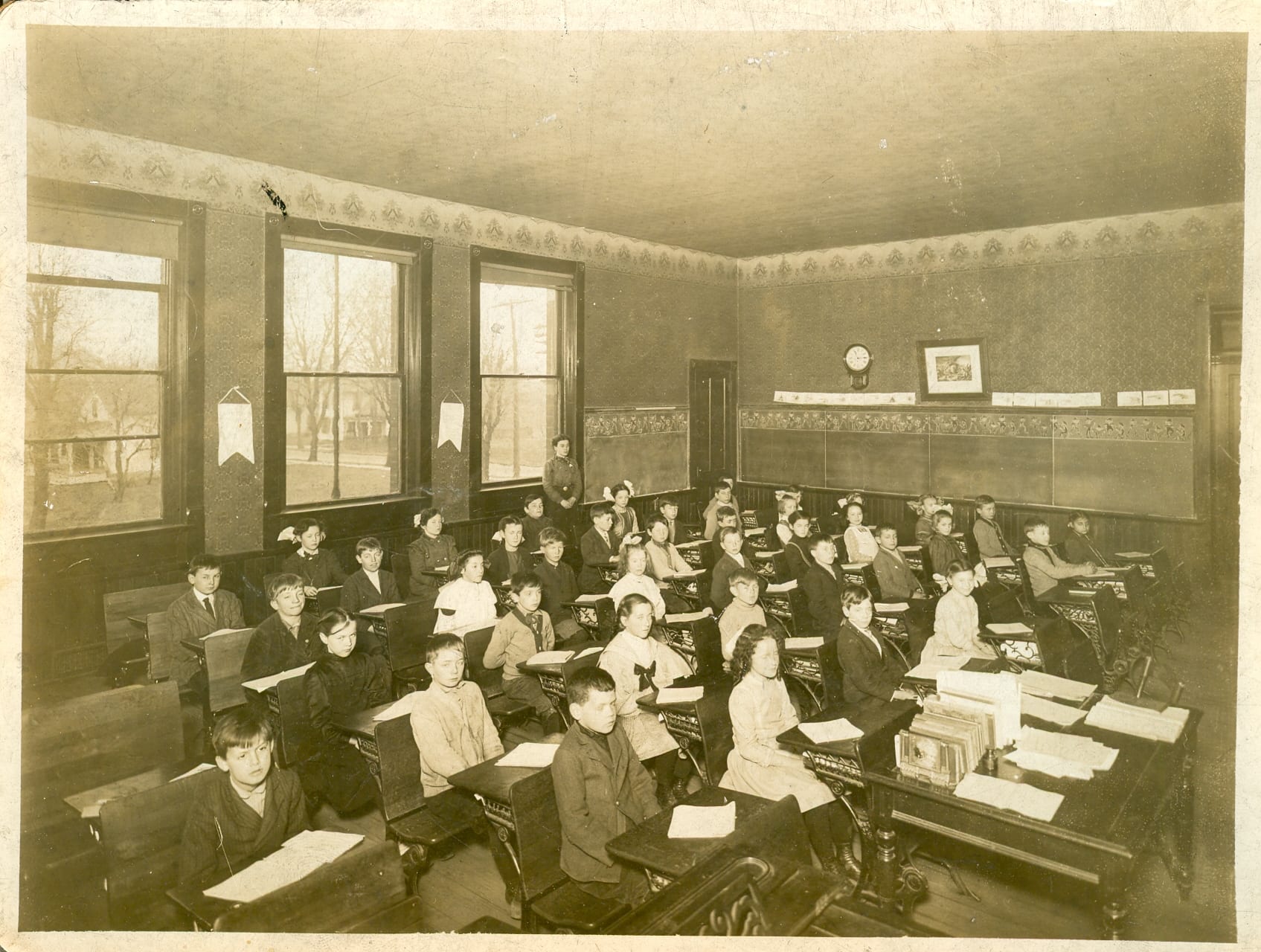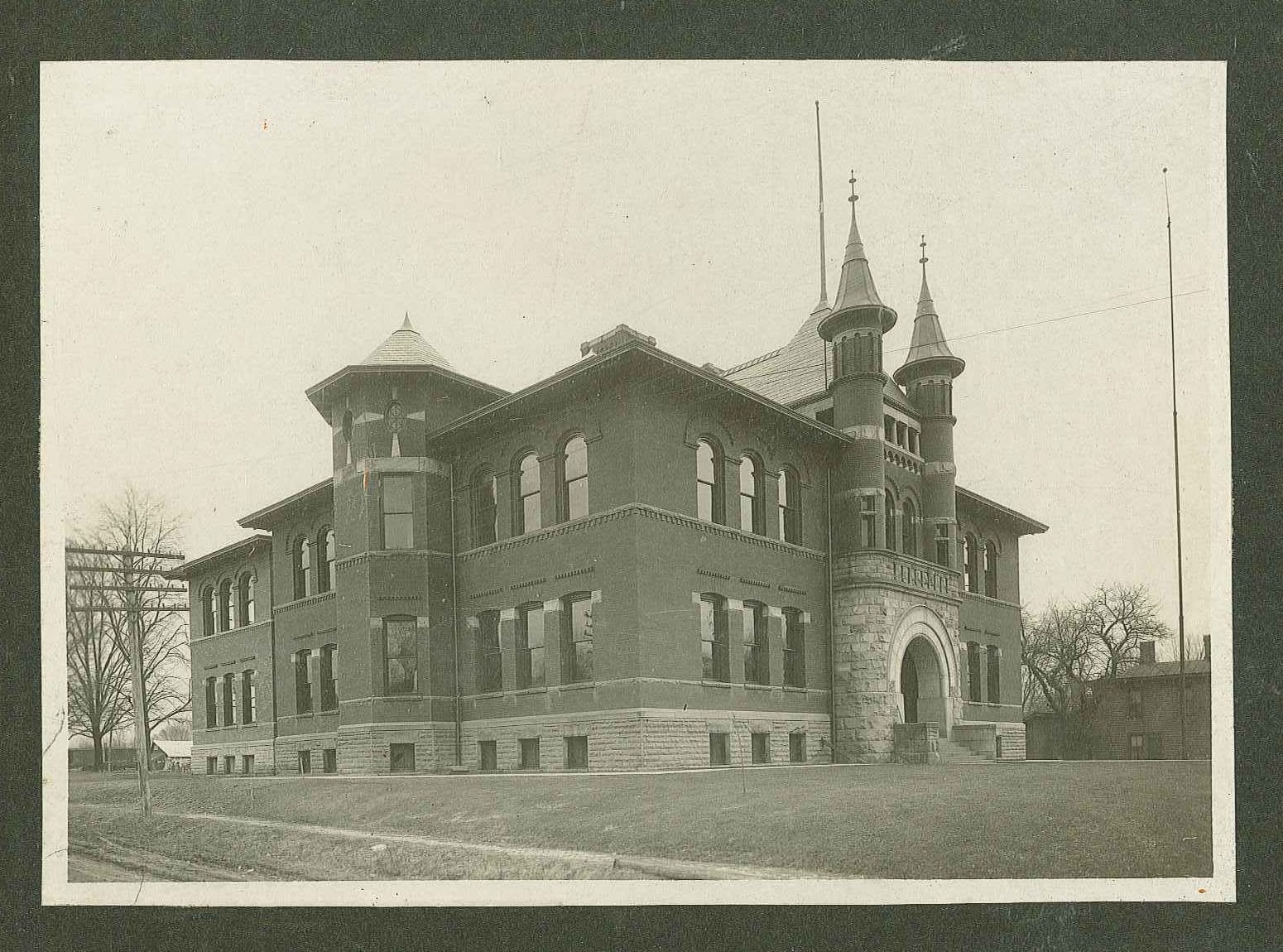On March 19, 1896, the governor of Ohio, Asa Bushnell, and other important dignitaries came to Westerville to dedicate the Vine Street School. The ceremony took place at Otterbein University and those attending marched to the new school building and toured the structure that the local newspaper called “the Temple of Learning.” Citizens of Westerville were proud of the structure with its six classrooms and architecture like a castle. The new school was a two-story brick building with an impressive entryway. Inset into the bricks on either side of the door were a pair of faces carved in stone –a young boy and a young girl. They have been nicknamed “the eternal children of Emerson.”
As the village of Westerville grew, the citizens built a succession of schools containing more than one room. But as the growth continued, they voted the money to build a new, bigger building–the Vine Street School (Emerson Elementary as of 2022). Students came from all around the area to attend this school–especially the high school grades. When the Vine Street School opened, some things were the same as the early one-room schools–no indoor bathrooms and no drinking fountain. The playground was different also. Boys were told to play on one side of the playground and girls on the other. The boys were upset because the only swings were on the girls’ side.
The school had a staff of teachers and a custodian. The custodian was responsible for shoveling coal into the furnace to keep the school warm. Some students said that he was always covered with black dust from the coal. He also had to pull a rope to ring the big bell that summoned students to the school in the morning. One female student told me that the custodian would ring the bell three times and on the third ring students needed to be in line ready to march into their classrooms. When she was in the first and second grade, she would walk to school very slowly from her home which was several blocks away. When the custodian saw her coming he would wait until she was in the building before he would ring the bell the third time so she would not be tardy. She always appreciated his kindness and as she got older she made sure that she walked faster down the block and up the stairs into the building so he would not have to wait on her.
In the early years there was no lunchroom at the Vine Street School so all the students walked home for lunch. However, some students rode a horse into town every morning to come to school. There were some barns near the school where they could leave their animals. At lunch time they were expected to go to the barns and feed and water their horses before they ate the lunch they brought from home. (Some high school age students came to town from far away and would arrive Monday morning, spend the week living with a local family and ride home on Friday after school.)
Changes were made to the school through time. Originally it housed first grade through high school and high school was only three years long. In 1908, four rooms were added. Electricity was installed in 1914 and during that same year a drinking fountain replaced the old bucket and cup. In 1916, kindergarten classes were added. Between 1902 and 1920, the enrollment at the school increased from 311 to 607. Because of this growth, the school was very crowded so the school district purchased a home on State Street. Students attended classes in the living room, kitchen and bedrooms. Finally, in 1923, the citizens of Westerville built a high school on State Street (Hanby Elementary as of 2022). Since that time, high school students have had a separate place of learning.
February 2, 1931, is a day that students at the Vine Street School never forgot. On that date, Longfellow Elementary School opened. All of the elementary students in the town reported to Emerson at the beginning of that school day, however, half of them packed up their books and school supplies and marched down Vine Street, down State Street and onto Hiawatha Avenue to their new school– Longfellow. Students were sad as they said goodbye to the friends and classmates who they had attended school with since kindergarten.
Westerville has grown a lot since 1931 when there were two elementary schools and one high school. Today there are 15 elementary schools, 4 middle schools and 3 high schools in our community.
Last updated: 2/10/2022






